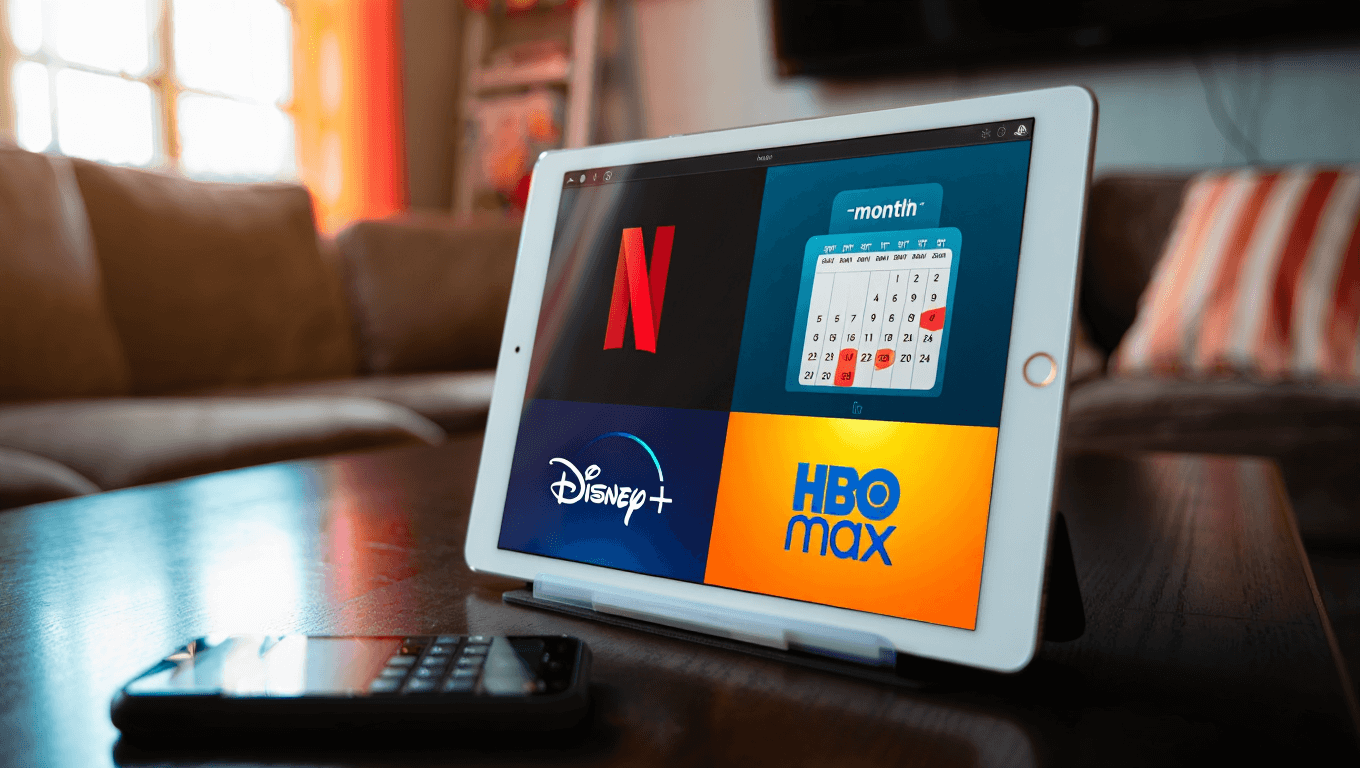The streaming rotation strategy is reshaping how viewers manage exploding subscription costs. By subscribing to 2 services per month and rotating every 60 days, you can access 12 different platforms annually for the same price. The strategy slashes average monthly bills from $69 to under $35 while maintaining access to blockbuster content. As of October 2025, this approach is gaining mainstream adoption.
🔥 Quick Facts:
- Average US household currently spends $69/month on 4 streaming services
- Rotation strategy reduces costs by up to 71% annually
- Netflix increased to $17.99/month, Disney+ to $18.99 as of October 2025
- Content “churn” is the industry term for rotation behavior
- Free trials and promotional offers maximize savings further
How the Rotation Strategy Works
The rotation strategy is simple but requires planning. Choose 1-2 core services you keep year-round, then rotate 2-3 additional platforms based on release schedules.
Instead of maintaining 6+ subscriptions simultaneously, you subscribe for 2 months, watch your must-see content, then cancel. You resubscribe when new seasons or shows premiere on that platform.
“People cancel their streaming subscriptions mainly due to price and availability—or lack of—engaging content,” states Deloitte’s 2025 Media Trends report. “The rotation method represents a shift in viewer behavior across the industry.”
The math is compelling. If you rotate Netflix, Disney+, HBO Max, Hulu, Paramount+, Apple TV+, Peacock, and Amazon Prime across 12 months, paying for 2 services at $15-20 each, your annual cost totals roughly $420. Traditional stacking costs over $800 annually.
The Best Rotation Strategies
Success depends on tracking release schedules religiously. Use apps like JustWatch or Hobi to monitor when seasons premiere on specific platforms.
Strategy One: The Quarterly Rotation – Keep Netflix and Disney+ for the full year. Rotate 4 additional services quarterly, spending 3 months on each.
Strategy Two: The Content-Based Approach – Subscribe when your anticipated shows drop. For example, subscribe to Max for House of the Dragon season premiere, then cancel immediately after binge-watching.
| Streaming Service | Monthly Cost (Oct 2025) | Best For Rotation |
|---|---|---|
| Netflix (ad-free) | $17.99 | Year-round staple |
| Disney+ Premium | $18.99 | Marvel releases, Star Wars |
| HBO Max | $21.00 | Premium HBO originals |
| Hulu | $11.99 | Budget rotation option |
| Paramount+ | $13.00 | Sports, CBS shows |
The rotation strategy works best when you avoid annual subscriptions. Monthly billing gives you flexibility to cancel instantly without penalties. Some services like Hulu allow pausing subscriptions for up to 12 weeks, which adds another cost-saving layer.
Top Money-Saving Tips
- Use calendar reminders for billing cycles and release dates to avoid surprise charges
- Stack free trials strategically—sign up, binge, cancel before charges begin
- Look for bundle deals like the Disney Bundle (Disney+, Hulu, ESPN+ at reduced pricing)
- Check carrier discounts—mobile providers and grocery memberships offer free services
- Track promotional offers from returning customer programs offering free trial months
- Pause instead of cancel when temporary breaks fit your schedule
Recent reports show $200+ annually gets wasted on unused subscriptions. The rotation strategy eliminates this waste by keeping you intentional about what you watch and when you pay.
Is Rotation Worth Your Time?
The rotation strategy isn’t perfect for everyone. If you demand immediate access to shows or can’t tolerate waiting for full seasons to release, rotating services creates frustration.
Weekly episode releases mean you’ll miss real-time conversations with friends. Binge-focused viewers might find delayed access disappointing. However, if you have patience and budget consciousness matters more than instant gratification, rotation delivers substantial savings.
As streaming services continue raising prices throughout 2025, subscription rotation is becoming less of a “hack” and more of a necessary survival strategy. The rotation approach reclaims control from streaming giants and puts your wallet back in your hands. Will you adopt it for your household?
Sources
- CNET – Comprehensive streaming rotation guide from October 2025
- Deloitte – 2025 Media Trends report on streaming subscriber behavior
- TechRadar – Subscription hopping analysis with cost breakdowns
Similar posts:
- How to Watch Everything for Under $40/Month in 2025
- Cancel These 3 Subscriptions Before November 1st – Here’s Why
- Hulu Live TV price jumps to $89.99/month starting Oct 21, steepest hike yet
- The $3.99 Streaming Service With 500+ Oscar Winners Nobody Knows About
- Netflix Price Hike: Will It Affect U.S. Subscribers? Find Out Now!

Daniel Harris is a specialist journalist focused on the crossroads of breaking news, extraordinary history, and enduring legends. With a background in historical research and storytelling, he blends timely reporting with timeless narratives, making complex events and ancient myths resonate with today’s readers. Daniel’s work often uncovers surprising links between present-day headlines and legendary tales, offering unique perspectives that captivate diverse audiences. Beyond reporting, he is passionate about preserving oral traditions and exploring how extraordinary stories continue to shape culture and identity.

